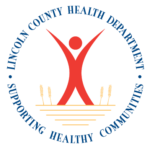Any disease that spreads from one thing to another is considered a communicable disease. This includes person to person, animal to person, or surface to person.† The spread can be direct, such as a sneeze or cough or even a hug, or indirect, such as contaminated food or water. Communicable diseases are everything from the common cold to HIV, from the flu to COVID, from ringworm to Salmonellaóall of which we care about protecting our community from having an outbreak.
There are four main types of communicable diseases.
Virus
A virus, like the flu and the common cold, are pathogens which require a host to live, as they do not have a complete cell structure. They infect a person (or animal), who becomes their host, and use the hostís natural body processes to replicate and survive.
Bacteria
Unlike a virus, bacteria are fully functioning organisms on their own. Our bodies have lots of good bacteria that help us stay healthy in places like our stomach and intestines. But some bacteria, or bacteria in places where it isnít supposed to be, can cause diseases.
Fungi
Fungi are complete and fully functioning organisms like bacteria, but they also require a relationship to survive like viruses. Out of the millions of different types of fungi, only about 300 of them are pathogens. Fungal infections are most common on the skin or on mucus membranes.
Protozoa
These single-cell organisms are everywhere, but parasite protozoa can reck havoc on our bodies. They use our systems to feed themselves, causing disease along the way.
As a health department, part of our job is to help protect the community from communicable diseases. We do this in several ways but there are three main ways you may see as we are out in the community.
One way is working with health care providers and medical labs to monitor certain diseases which pose a high risk to the communityís health. When one of these diseases is detected in Lincoln County, we conduct an investigation to find out where it started to prevent it from spreading. We also work with the person to help them recover. You can learn more about this under our Notifiable Disease page.
We also conduct education and outreach around different diseases and how to prevent them to the community. Youíve likely seen our flu vaccine reminders or posters about good hand hygiene. These, and many others, are done in an effort to provide the community with information on how to prevent illness and diseases.
Data and research may not be as well known, but our team works hard to watch the trends of diseases along with the preventable measures to help us predict if there is going to be a spike in a seasonal illness. The flu is a great example of how we not only monitor how many people receive a flu shot, but also how many reported cases of flu there are in a season. We can then adjust our efforts next year to lower the chances of people getting sick with the flu. There are lots of areas we use data and research to help guide the measures we focus on, but they all are motivated by the desire to keep diseases out of Lincoln County.
These and other efforts are all focused on one goal:
Keeping Lincoln County healthy.
